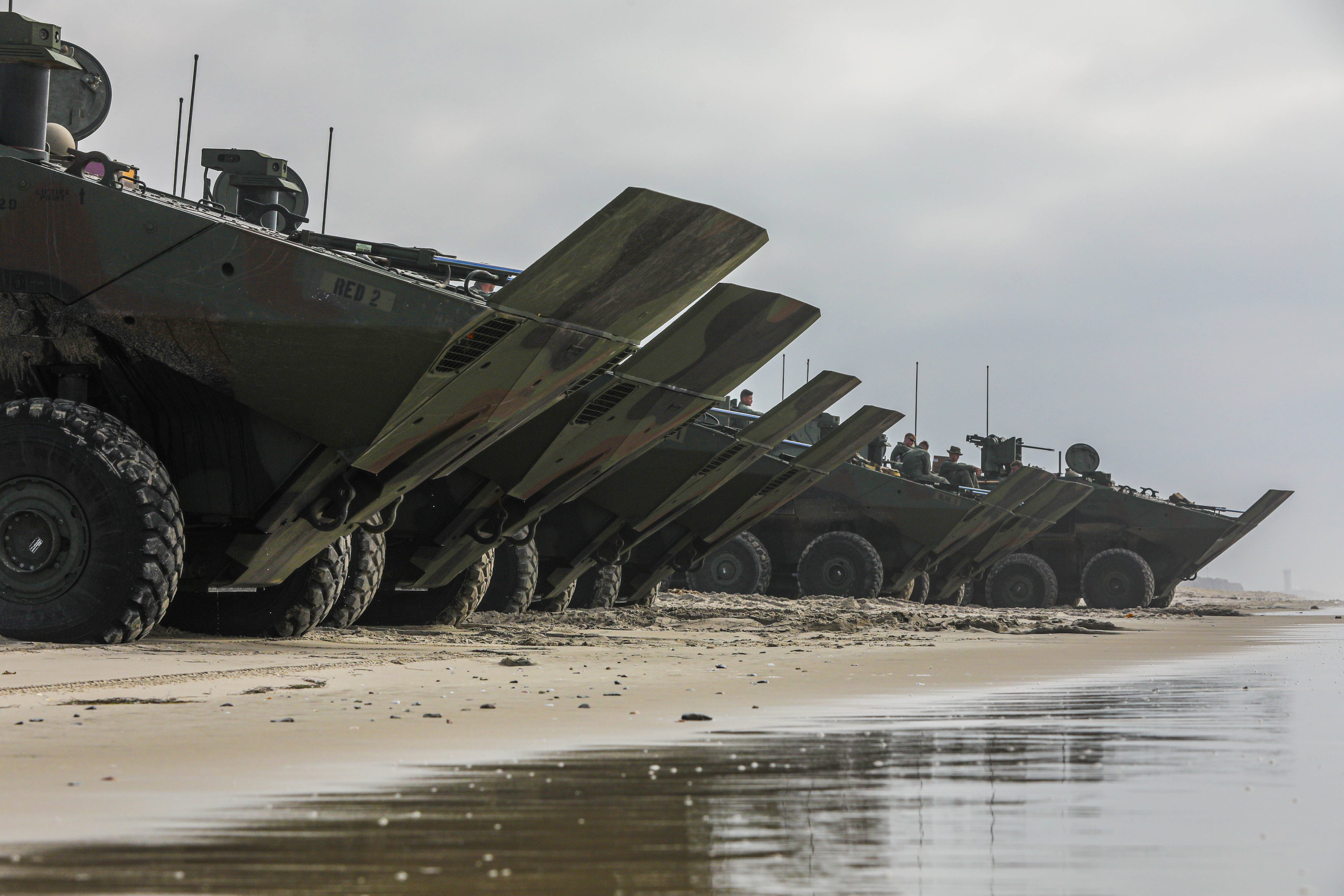New command and control and a separate 30 mm-cannon equipped variant of the Marine Corp’s amphibious combat vehicle are expected to arrive at units in early 2024.
That variant is one of four designs either fielded or under production by BAE Systems out of its York, Pennsylvania, facility, Defense News reported.
The amphibious combat vehicle personnel variant arrived at Marine units in 2021 to replace the legacy amphibious assault vehicle, which has been in service since the 1970s.
More than 200 amphibious combat vehicle personnel variants had been built by mid-2023, and 139 of those had been delivered to either operational or training units.
RELATED

Planners expect the command and control version, dubbed the ACV-C, to reach initial operational capability by March 2024, Col. Tim Hough, program manager for Advanced Amphibious Assault, told Defense News.
The ACV-C began production in 2022 but stalled following testing and design review problems.
Defense Department officials noted in a January 2023 report that the variant was “not operationally effective as a mobile command post.”
They cited a lack of “enough secure beyond-the-line-of-sight (BLOS) voice and data nets to support” the command and control mission.

But by July 2023 the manufacturer, BAE Systems, had resolved concerns and the vehicle was in full-rate production.
The same Pennsylvania production plant at the time was building three ACV-30 vehicles. The ACV-30 is equipped with a 30 mm cannon. Those three vehicles will be used for operational testing as the Corps decides the final details of the ACV-30′s design.
Mark Brinkman with BAE Systems’ told Defense News that the company will deliver ACV-30 vehicles to the Marines in early 2024 for testing.
Officials expect the ACV-30 to reach initial operational capability by mid-2026. That means a minimum of one Marine unit will be equipped with enough vehicles, parts and training to conduct an overseas deployment.
Marines operating with any of the ACV variants will still need to keep at least one version of the old AAV in the inventory for at least a few more years.
That’s because the new recovery variant, or ACV-R isn’t expected to reach its initial operational capability until late 2027 or early 2028. Marines must rely on the AAV recovery variant for field maintenance until its replacement arrives.
Todd South has written about crime, courts, government and the military for multiple publications since 2004 and was named a 2014 Pulitzer finalist for a co-written project on witness intimidation. Todd is a Marine veteran of the Iraq War.





